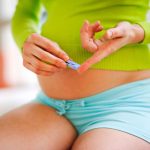What are gallstones?
Gallstones (cholelithiasis) are hard, pebble-like masses that form in your gallbladder. Your gallbladder is a small pear-shaped organ on the right side of your abdomen (tummy), below your liver.
Gallstones can be made of undissolved cholesterol (called cholesterol gallstones) or the digestive fluid bile (called pigment gallstones). Your gallstones may be as small as a grain of sand or as large as a golf ball. You can develop one gallstone or many.
Gallstones can block the tubes that carry digestive fluids from your gallbladder to your bowel, causing pain and/or other symptoms.
What are the symptoms of gallstones?
Some people with gallstones never experience symptoms.
Others have episodes of pain in the abdomen, back or right shoulder. These might not happen often, but can be severe, and may develop after a particularly fatty meal.
Gallstones can sometimes cause other problems such as:
- jaundice — yellowing of your skin and of the whites of your eyes
- cholecystitis — severe pain in the upper right abdomen, nausea and vomiting
- pancreatitis — severe upper right abdominal pain
What causes gallstones?
It is not fully understood why gallstones form. However, you are more likely to get gallstones if you’re:
- female
- aged over 40 years
- living with overweight or obesity, or are inactive
- pregnant or taking the contraceptive pill
- if you lose weight quickly
- if you have diabetes
- have a family history of gallstones
How are gallstones diagnosed?
A range of tests can be used to diagnose gallstones.
The most common imaging test to detect gallstones is an abdominal ultrasound.
Other tests may include:
- a computed tomography (CT) scan
- magnetic resonance imaging (MRI) scan
- a hepatobiliary iminodiacetic acid (HIDA) scan, in which a radioactive tracer is injected into your body, allowing doctors to assess how well your gallbladder functions
- an endoscopy, which involves a doctor inserting a thin, flexible, lighted tube into your mouth and guiding it down through your oesophagus (throat), stomach and small intestine so they can assess your biliary system. Some types of endoscopy also allow your doctor to remove any gallstones found.
You will usually also have blood tests to check your liver function.
When should I see my doctor?
If you are experiencing severe and ongoing abdominal pain, seek urgent medical attention.
If your doctor thinks gallstones may be causing your symptoms, and this is confirmed by physical examination and by investigations, they may refer you to a gastroenterologist or a surgeon.
How are gallstones treated?
The main ways gallstones are treated are dietary changes and surgery.
Not everyone who has gallstones will need treatment. You may discover you have gallstones incidentally during an unrelated medical scan without experiencing symptoms or needing treatment.
If your gallstones are causing symptoms, your doctor may recommend treatment, which may involve dietary changes, medicines and/or surgery.
Dietary changes
You may be able to manage your symptoms by reducing the amount of fatty foods and dairy products you consume. You should eat plenty of fruit and vegetables, drink a lot of fluids and aim to lose weight gradually if you are overweight.
Medicines
There are medicines to dissolve gallstones, but they are not very effective, and some have side effects. Gallstones also commonly recur after treatment. For these reasons, most doctors do not recommend using medicines to treat gallstones.
Surgery
The most common treatment for gallstones is surgery. Your surgeon may remove your entire gallbladder (cholecystectomy), or just the stones from your bile ducts.
Cholecystectomy does not affect your ability to digest food. You can live a healthy life without your gallbladder. After surgery, the bile flows directly from your liver to your small intestine.
The most common type of surgery is keyhole or laparoscopic cholecystectomy. The surgeon will make a few small incisions in your abdomen, insert a miniature video camera and instruments, remove your gallbladder and stitch up the incisions. Your trapped gallstones will be removed at the same time.
If your gallbladder is very inflamed, you may need open surgery, which requires a larger incision.
Recovery is usually faster after keyhole surgery. You may be able to go home the day after your operation. If you have open surgery, you may need to stay in hospital for several days.
Can gallstones be prevented?
Although diet doesn’t directly cause gallbladder problems — or cure them — choosing a healthy diet may help prevent gallstones from forming. It may also help you avoid discomfort if gallstones develop.
Choose a diet that’s low in fat and cholesterol and high in fibre, as this is the most likely to reduce your chance of gallstones.
Some studies have shown that eating a lot of fruit and vegetables, and drinking coffee or tea, can also lower your risk of gallstones.
What are the complications of gallstones?
If a gallstone moves or gets stuck in your bile duct, it can cause severe pain, known as biliary colic. The pain can last from a few minutes to several hours, and may make you vomit.
Gallstones can also cause thickening or inflammation of your gallbladder, known as cholecystitis. This causes pain and often a fever. Cholecystitis is a serious condition, and you will need to be treated in hospital. If your cholecystitis is not treated, your gallbladder can burst, which is a life-threatening condition.
Sometimes gallstones can lead you to develop jaundice (yellowing of the skin), or pancreatitis (inflammation of your pancreas). These are all serious conditions that also need to be treated in hospital.




![GHB – [Gamma HydroxyButyrate]](https://medicine-21.com/ru/wp-content/uploads/2023/09/ghb_hd_h-8e4301-150x150.jpg)